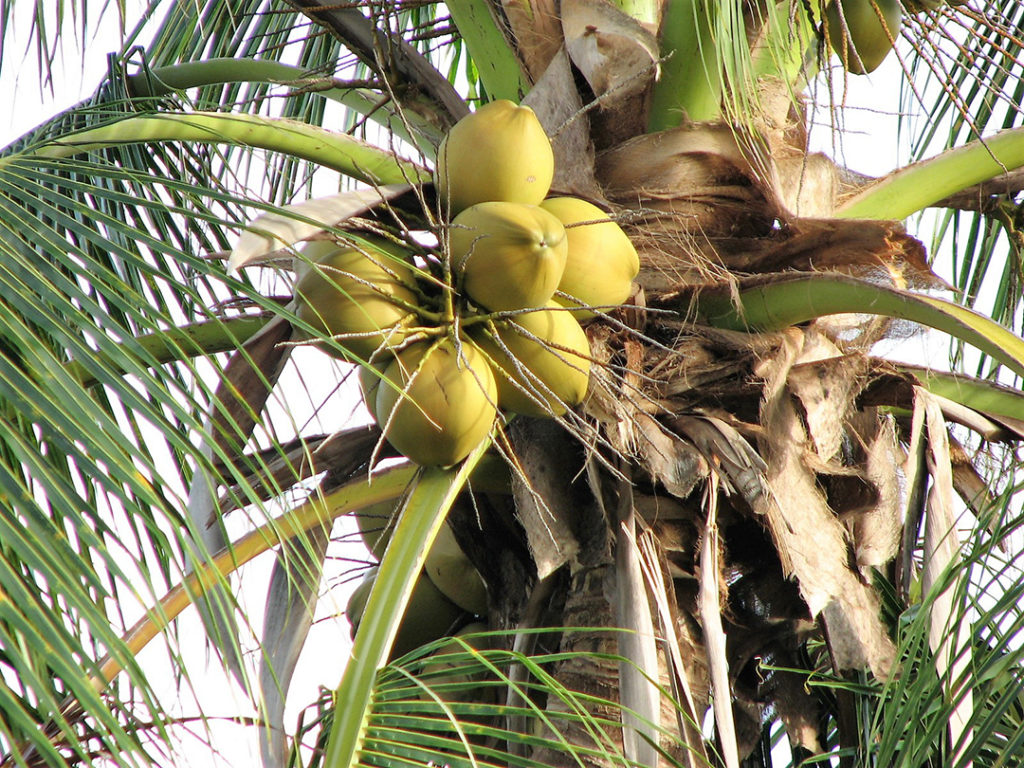
Kiribati
Coconut Palm
Cocos nucifera

General Description / Cultural Significance
The Coconut Palm, Cocos nucifera, is the most important tree to the people of Kiribati, a nation of about twenty inhabitable islands in the Pacific Ocean. They use the coconut tree in medicine, as food, and for shelter. They make a sweet coconut syrup from which a drink is made called kamwaimai. Coconut husks are used for fire wood and to make string and door mats, while the branches are used to create house walls. The roots and barks are used to make medicine to treat headaches and yellow fever. Children’s toys and decorations are made from the leaves. Copra, the dried meat of the coconut, is both an important source of income for people and a primary export item for the country. The people of Kiribati have come to know the tree most fully when they boil the copra for oil and experience the tree’s essence.
Toddy is what the sapthe, a large sheath enclosing the flower cluster of the coconut tree, is called. Toddy is cut by the men, who climb the tree. Some make toddy knife, a specific sharp tool from a saw blade specially for this job. Toddy is fermented and made into coconut wine.
Climate Change/Conservation Status
Unfortunately, the impacts of climate change have arrived in the Pacific. Simply put, Kiribati is sinking. With every flood more of the atolls erode and more coconut trees are lost to the sea. Soon the nation’s coconut palms, whose ancestors appeared on earth long before humankind, one of the most useful trees in the world, will be lost entirely; as Kiribati’s citizens become climate change refugees.
Two islands have completely submerged and the people of the other islands have migrated inland but even there floods and devastation occurs. The Kiribati government is in the process of purchasing land in Fiji and soon the entire country will be forced to emigrate.
As the people of Kiribati struggle to survive, they are also making a concerted effort to educate future generations about their culture, practices and beliefs. How Kiribati’s heritage and very existence is at stake is the theme of their Water is Rising performances they carry out.
Alternate Names
Copra
Coconut
Sources
Ahuja, S.C., Ahuja, S., & Ahuja, U., 2014. Coconut – History, uses, and folklore. Asian Agri-History. 18(3): 221-248.
Barba, A., 2021. Kiribati: The First Country the Ocean Will Claim. The Journal of Diplomacy and International Relations. [website]
Steiner, C.E., 2015. A Sea of Warriors: Performing an Identity of Resilience and Empowerment in the Face of Climate Change in the Pacific. The Contemporary Pacific. 27(1): 147-180.

